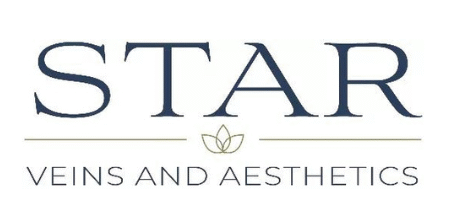Varicose veins are a common concern, impacting the lives of millions, especially those who stand for long periods or have a family history of vein issues. These enlarged, twisted veins don’t just affect appearance; they can cause discomfort, aching, and sometimes lead to more severe health issues if untreated. But what is the most effective treatment for varicose veins? We’ll look at the top treatment options available, with insights from Dr. Gulshan Sethi, a highly respected vein specialist based in Long Island who provides expert vein care and treatment.
1. Understanding Varicose Veins
Varicose veins develop when vein walls and valves weaken. In healthy veins, one-way valves ensure blood flows back to the heart, but when these valves malfunction, blood can pool, causing veins to enlarge, twist, and become visible beneath the skin. These veins commonly appear in the legs and feet, where pressure from standing and walking is greatest.
2. Top Treatment Options for Varicose Veins
With many effective treatments available today, you have options tailored to your specific condition, vein size, and health status. Here’s a breakdown of the top treatments offered by Dr. Gulshan Sethi and other vein specialists:
2.1. Radiofrequency Ablation (RFA)
Radiofrequency Ablation (RFA) is a popular treatment that uses heat to collapse varicose veins. In this procedure, a catheter is inserted into the affected vein and emits radiofrequency energy, causing the vein walls to contract and close. Blood then reroutes to healthier veins, and the treated vein is naturally reabsorbed by the body.
- Success Rate: RFA boasts a high success rate, often exceeding 90%, making it one of the most effective treatments.
- Pros: Minimally invasive, requires only local anesthesia, and offers a quick recovery.
- Cons: Some patients may experience mild bruising or discomfort afterward, which usually subsides quickly.
2.2. Endovenous Laser Therapy (EVLT)
Endovenous Laser Therapy (EVLT) is another advanced treatment using laser energy to close varicose veins. A tiny fiber is inserted into the vein, and laser energy is applied to seal it. This treatment is highly effective for larger varicose veins.
- Success Rate: EVLT has a success rate of about 94-98%, making it highly effective.
- Pros: Minimally invasive, with little to no downtime.
- Cons: Some patients may experience minor bruising, but it typically fades within a few days.
2.3. Sclerotherapy
Sclerotherapy is an ideal solution for smaller varicose veins and spider veins. During the procedure, a special solution is injected directly into the vein, causing it to collapse and gradually disappear as the body absorbs it. Dr. Sethi often recommends sclerotherapy for patients with smaller veins seeking an efficient, minimally invasive option.
- Success Rate: Sclerotherapy has a success rate of 75-80% for smaller veins.
- Pros: Quick and effective for smaller veins with minimal downtime.
- Cons: Not as effective for larger varicose veins; some patients may need multiple sessions.
2.4. Varithena Procedure
The Varithena procedure is a cutting-edge, FDA-approved foam treatment specifically designed for treating varicose veins in the legs. Dr. Gulshan Sethi is one of Long Island’s trusted providers of the Varithena treatment, which involves injecting a microfoam sclerosant into the vein, sealing it, and redirecting blood to healthier veins.
- Success Rate: Varithena has a success rate of around 88-94%.
- Pros: Minimal downtime, very little discomfort, and is ideal for veins that are harder to treat with other methods.
- Cons: Mild bruising or swelling may occur temporarily after the procedure.
2.5. Vein Stripping and Ligation
For severe cases, vein stripping and ligation may be required. This procedure involves tying off and surgically removing the affected vein. It’s more invasive and usually reserved for patients with significant vein issues that cannot be effectively treated with minimally invasive methods.
- Success Rate: Vein stripping and ligation has a high success rate of about 90% for advanced cases.
- Pros: Effective for large, complex varicose veins.
- Cons: Longer recovery period and more discomfort compared to newer treatments.
3. How to Choose the Right Treatment
Determining the best treatment for varicose veins involves considering several factors:
- Severity of veins: Smaller veins typically respond well to sclerotherapy, while larger veins are best suited for RFA, EVLT, or Varithena.
- Personal health and lifestyle: Your overall health, medical history, and preferences for recovery time may influence which treatment is best for you.
- Consultation with a Specialist: Working with an experienced vein specialist like Dr. Gulshan Sethi can help you make an informed decision. Dr. Sethi has extensive experience in diagnosing and treating vein issues and offers personalized care to help each patient find the right treatment.
4. Frequently Asked Questions (FAQs)
Q: Will varicose veins come back after treatment?
A: Treated veins rarely return, but new varicose veins can develop over time, especially if lifestyle and genetic factors are present.
Q: Does insurance cover varicose vein treatments?
A: Many insurance plans cover varicose vein treatments when deemed medically necessary. Check with your provider and consult Dr. Sethi for guidance on getting insurance approval.
Q: How soon can I expect to see results?
A: Results vary depending on the treatment. Some patients notice improvement within a week, while others may see full results within a few months.
Final Thoughts
Today’s advanced treatments make it easier than ever to address varicose veins with safe, effective options. Whether it’s minimally invasive procedures like RFA, EVLT, or the innovative Varithena foam treatment, there are options with high success rates and minimal recovery time. Consulting with a vein specialist like Dr. Gulshan Sethi is the best first step to determining the most effective solution for you. If you’re ready to improve your vein health and comfort, Dr. Sethi’s expert care and guidance will help you take the first step toward healthier, vein-free legs.
